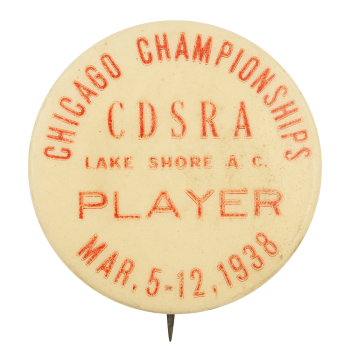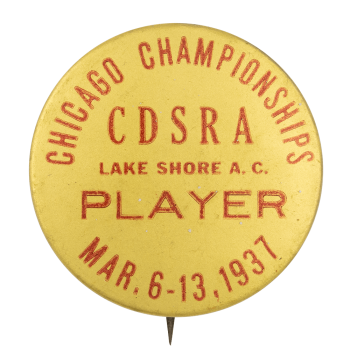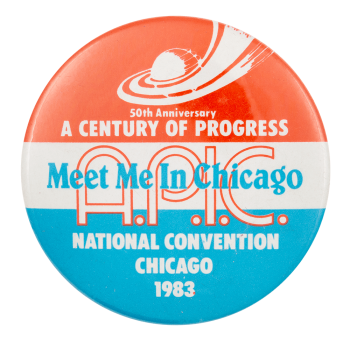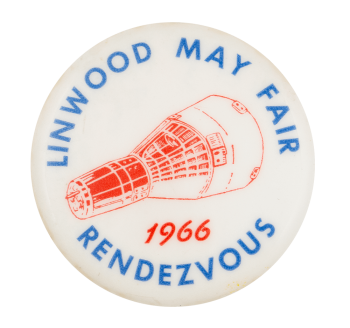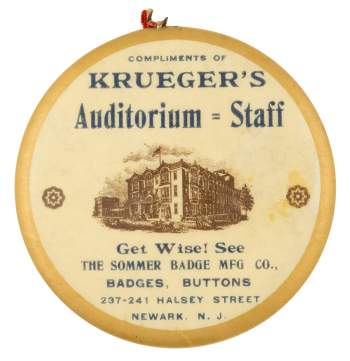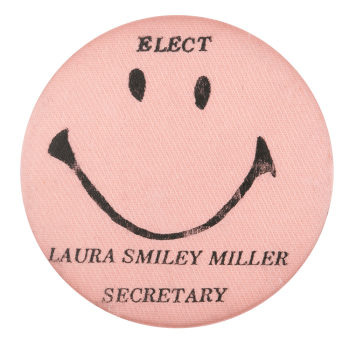CDSRA Chicago Championships 1938
| Category | |
|---|---|
| Additional Images | |
| Text on Button | CHICAGO CHAMPIONSHIPS C D S R A LAKE SHORE A. C. PLAYER MAR. 5-12, 1938 |
| Image Description | Red text on a white background |
| Back Paper / Back Info |
Made by AMERICAN BADGE CO. CHICAGO, ILLS. |
| Back Style | |
| The Shape | |
| The Size | |
| Year / Decade Made | |
| The Manufacturer | |
| Additional Information | In March of 1938, the Chicago District Squash Racquets Association (CDSRA) held its eighth annual tournament at Lake Shore Athletic Club. Squash racquets, or squash, at it is now commonly known, is still a popular sport in Chicago. Each year, the city holds the Windy City Open, in which men and women compete for a place at the Professional Squash Association’s World Tour. Sources: Windy City Open. (n.d.) Windy City Open. Retrieved from http://windycityopen.com/. Name Chicago Team for Squash Title Tourney. (1938 February). Chicago Tribune. Retrieved from https://www.newspapers.com/image/372688752/?terms=chicago%2Bdistrict%2Bsquash%2Bracquets%2Bassociatio |
| Catalog ID | CH0285 |

